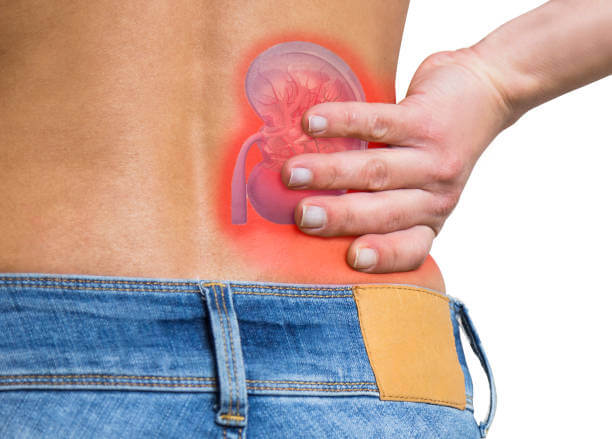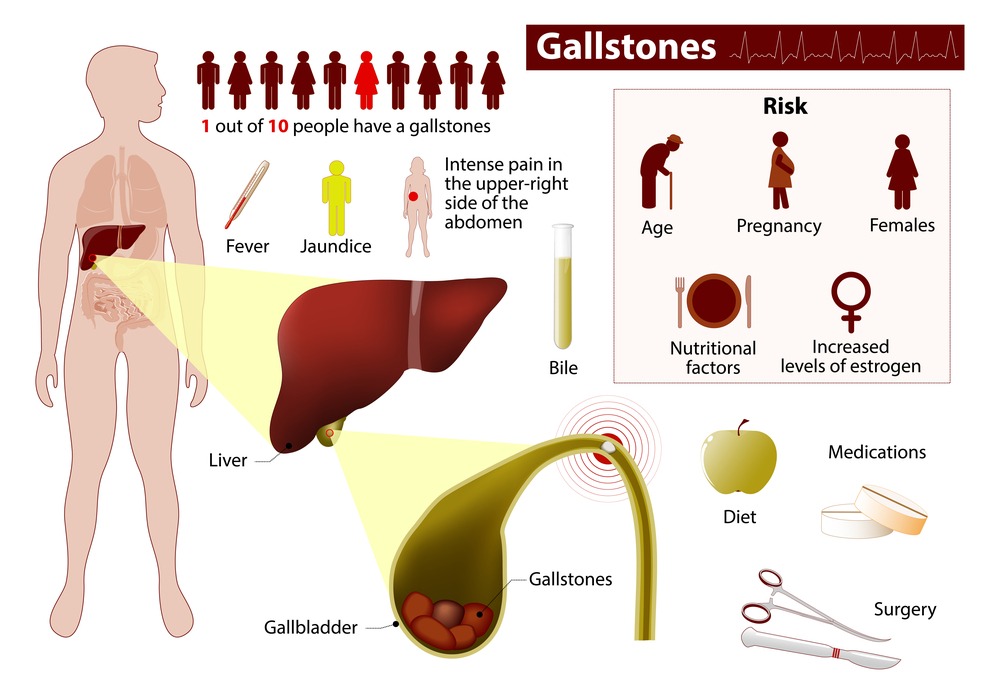A kidney stone can be extremely painful or rather passing one can be an extremely painful experience, as most people who have had one will attest to. Some patients go so far as to compare the pain to giving birth. The pain from the tiny calcium deposits can be so severe that it’s difficult to perform even the most basic daily tasks. Often the pain gets worse at night, making it difficult to sleep. Finding the right position for comfort and pain relief when dealing with kidney stones after limb amputation can vary from person to person. However, certain positions may help alleviate pain and facilitate the passage of stones more effectively.
What Are Kidney Stones?
When there is too much waste and not enough liquid to let it exit the body through urine kidney stones can develop as hard objects. Calcium uric acid and cystine are some substances that can result in a stone because they can form crystals if they aren’t flushed out. A kidney stone is subsequently formed when the crystals come together. Kidney stones can occur and one may not be aware of them. Small stones pass through without causing any discomfort. Kidney stones can only be detected in certain individuals during imaging tests for unrelated conditions. Big kidney stones typically result in the following symptoms:
• Extreme lower back discomfort.
• Urine that looks hazy.
• Urine that stinks.
• Pee containing blood.
• Experiencing nausea and vomiting.
• Cold and fever.
Severe back pain which is the most noticeable sign of kidney stones doesn’t really happen when the deposits are in the kidneys. Pain starts to manifest when the stones pass through the ureters, which are the tubes that join the kidneys and bladder. The stones also cause the ureters to spasm slowly or block urine flow and hurt.
Stages Of Passing A Kidney Stone
There are four stages in the development and normal passage of kidney stones. What phases does a kidney stone go through?
Formation of Kidney Stones
Pee that has become concentrated because of insufficient water in the body may cause kidney stones to form. This makes it possible for crystals to grow and draw in other substances. Kidney stones do not hurt to form.
Kidney Stone Removed
When a kidney stone enters the ureter the tube that joins your kidneys to your bladder it is considered to have passed its second stage. The ureters’ attempt to pass the stone can cause waves of pain. The stone may become lodged in the ureter itself at the ureteropelvic junction (the junction between the ureter and renal pelvis) or near the ureterovesical junction (the junction between the ureter and the bladder).
Bladder Pressure Increases
The bladder becomes more pressurized when the stone gets there. During this phase of kidney stone passage, you will experience a strong urge to urinate frequently. After the stone passes out of the ureter, the most severe pain usually gets better or goes away completely.
Kidney Stone Leaves the Body
Kidney stones can push their way out of the bladder and exit your body through the urethra when you urinate. During the final stage, there is typically little to no pain.
Which Is The Ideal Kidney Stone Pain Relief Position?
Many kidney stones disappear on their own without treatment. But passing a stone can hurt or be uncomfortable. Make sure you stay hydrated and take your doctor’s prescribed painkillers to help it pass through. An additional aid is how you hold your body. It is recommended to lie on the side of the body that hurts. Stated differently if the stone is located in your left ureter, lie on your left side if it is located in your right ureter lie on your right. According to medical research, lying on the side of the kidney that is impacted can improve blood flow which aids in the stone’s removal from the ureter.

How To Stop Kidney Stone Pain Immediately?
Kidney stones are common and can recur after they have been treated but there are easy ways to help avoid them. The following tactics may be useful:
Make Sure You’re Drinking Enough Water
A National Kidney Foundation meta-analysis found that pee production between 2 to 2.5 litres per day was related to a fifty per cent reduced chance of kidney stones than decreased urine production. To make that amount of water one must drink eight to ten 8-ounce glasses (or roughly two litres) every day.
Consume More Plant Foods High In Calcium
Yogurt, soy products, beans, lentils and seeds are all excellent sources. Oxalate is bound by dietary calcium in the intestines resulting in decreased absorption and urine concentrations.
Savor Some Lemons
One of the citric acid salts citrate binds to calcium to prevent the formation of stones. Studies have indicated that consuming half a cup of concentrated lemon juice diluted in water or the juice of two lemons daily can raise urine citrate levels and possibly lower the risk of kidney stones.
Be Mindful Of The Sodium
Because it raises the amount of calcium in your urine, a high-sodium diet can cause kidney stones. According to federal guidelines, a person’s daily sodium intake should not exceed 2300 mg.
Eat Less Animal Protein
Consuming excess animal protein, which includes meat eggs and seafood, raises the possibility of developing stones. Reduce the amount of meat you eat each day to no more than a deck of playing cards if you are at risk of kidney stones.
Gallstones Vs Kidney Stones
Gallstones
Digestive fluid buildup in your gallbladder causes gallstones. While some people only experience one gallstone at a time, others may experience multiple episodes. Gallstones can develop in a variety of sizes. Gallstones come in a range of sizes, from the size of a golf ball to as small as a grain of rice. The exact cause of gallstone formation is not always known. The most typical reasons consist of:

• Abnormal gallbladder emptying: Bile can become extremely concentrated when the gallbladder doesn’t empty frequently enough or at all. Gallbladder crystal formation may result from this.
• Too much cholesterol in the bile: If your liver excretes more cholesterol than the bile can dissolve the extra bile may solidify into crystals. Eventually, gallstones may form from those crystals.
• Excessive bilirubin levels in bile: The breakdown of red blood cells by your body produces bilirubin. Your liver produces an excessive amount of bilirubin due to certain medical conditions. Gallstones may develop as a result of this.
Kidney stones
Urine chemicals can cause kidney stones. Crystals can form when the chemicals in urine clump together because of insufficient liquid or excessive waste. Hard kidney stones may form from these crystals, attracting other substances and elements if the kidneys are unable to eliminate them. Kidney stones come in four varieties:
• Calcium: The most prevalent kind of kidney stones are calcium stones. They typically arise from dietary factors elevated vitamin D levels metabolic disorders or gastric bypass surgery.
• Struvite: Urinary tract infections are the cause of struvite stone formation.
• Uric acid: Fluid loss from prolonged diarrhoea or malabsorption is usually the cause of uric acid stones. Additionally, diabetes certain metabolic disorders and a high-protein diet can cause them to form.
Cystine: Individuals with an inherited disorder known as cystinuria are susceptible to the formation of cystine stones.
How Do Gallstones Get Treated?
Gallstones do not always require treatment unless they are causing symptoms. Quite often your doctor will advise you to keep an eye out for any symptoms that might mean you need medical attention. Options for therapy, when necessary, include:
• Drugs to dissolve gallstones: Gallstones can occasionally be dissolved with prescription drugs. These drugs are not always a permanent fix and may take months to start working.
• Gallbladder removal surgery: In certain cases, patients with severe symptoms may benefit from this procedure because gallstones often recur. There are no major health risks associated with gallbladder removal.
How do kidney stones get treated?
Depending on the size of the kidney stone, different treatments are available. You may be asked to drink a lot of water if you have small kidney stones. In this way, the kidneys can naturally pass the stone. In other situations, taking a prescription drug can help lower the acidity of your urine which will facilitate passing. Surgery may be necessary for larger stones that are posing a risk for infection or are causing severe symptoms. Surgical alternatives consist of:
• Shock-wave lithotripsy: This method breaks up the stones with sound waves. The pee can then allow them to pass through.
• Ureteroscopy: Ureteroscopy removes kidney stones by inserting a thin instrument called an endoscope through the urethra.
• Nephrolithotomy: By creating a channel from the kidney to the skin this procedure makes it possible to remove stones.
How to Diagnose and Treat Kidney Stones at Home?
Urine is the only way for kidney stones to leave the body. Less than 5mm stones typically pass with ease. Larger stones usually call for medical attention. The time it takes for a kidney stone to pass varies depending on its location and size.
When to Contact a Medical Professional?
Seek medical attention as soon as possible if you are experiencing severe pain fever or vomiting while passing a kidney stone. Treatment-related infections can result from kidney stones. Speak with your provider if you’re unsure what to do. They might advise you to visit the emergency room or urgent care centre.


